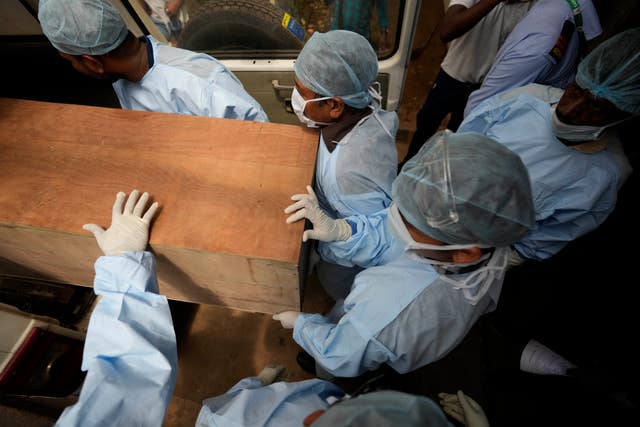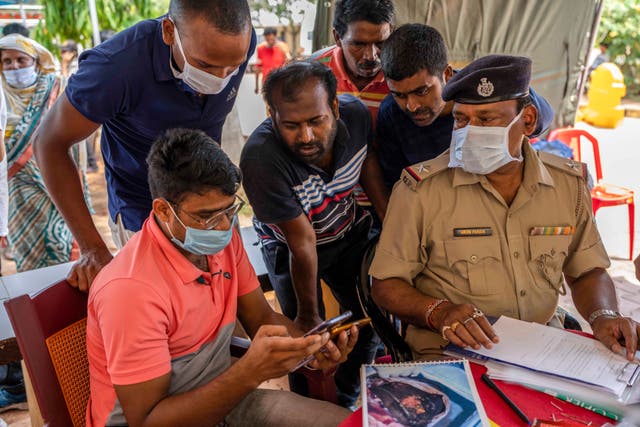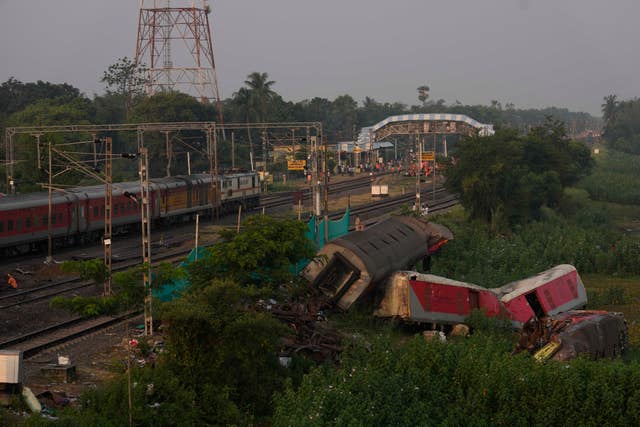
Families of the victims of India’s deadliest train crash in decades have filled a hospital in Bhubaneswar city to identify and collect bodies.
Distraught relatives of passengers killed in the crash on Friday lined up outside the eastern city’s All India Institute of Medical Sciences.
Meanwhile, survivors being treated in hospitals said they were still trying to make sense of the disaster.
Outside the hospital, two large screens cycled through photos of the victims.
Each body had a number assigned to it, and relatives stood near the screen and watched as the photos changed, looking out for details like clothing for clues.

Many of them said they had spent days on desperate journeys from neighbouring states, travelling on multiple trains, buses or in rented cars to identify and claim bodies, a process that stretched into a third day due to the nature of the injuries.
So far only 45 bodies have been identified, and 33 have been handed over to relatives, said Mayur Sooryavanshi, an administrator who was overseeing the identification process at the hospital in the capital of Odisha state, about 125 miles south of the site of the train crash in Balasore.
Upendra Ram began searching for his son, Retul Ram, on Sunday, after traveling some 520 miles from neighbouring Bihar state. The one-day journey in a rented car was exhausting for Mr Ram, who said Retul, 17, had been on his way to Chennai to find work.
After spending hours looking at photographs of the dead, Mr Ram identified his son at around noon on Monday.
“I just want to take the dead body and go back home. He was a very good son,” said Mr Ram, adding that Retul had dropped out of school and wanted to earn money for the family.
“My wife and daughter can’t stop crying at home. They are asking me to bring the body back quickly,” he said, wiping tears from his eyes with a red scarf he had tied around his head.

Friday’s deadly crash was one of the worst rail disasters in India’s history.
Investigators said that a signalling failure might have been the cause of the disaster, in which a passenger train hit a freight train, derailing on the tracks before being hit by another passenger train coming in the opposite direction on a parallel track.
The collision involved two passenger trains, the Coromandel Express travelling from Howrah in West Bengal state to Chennai in Tamil Nadu state, and the Yesvantpur-Howrah Superfast Express travelling from Bengaluru in Karnataka to Howrah, officials said.
Authorities recommended on Sunday that India’s Central Bureau of Investigations, which probes major criminal cases in the country, open an investigation into the crash.
After the accident, at least 123 trains scheduled to pass through Odisha were either cancelled or delayed, Indian railways said on Sunday. The disruption led air fares to Odisha to spike, prompting India’s civil aviation ministry to advise airlines to watch abnormal surges in pricing.
Meanwhile on Sunday evening, some train traffic was restored on the tracks where the crash happened, after two days of repair work in which hundreds of workers with excavators removed mangled debris of the trains.
The crash in Balasore occurred as Prime Minister Narendra Modi is focusing on the modernisation of India’s colonial-era railway network.

The South Asian nation has one of the world’s most extensive and complicated railway systems with more than 40,000 miles of track, 14,000 passenger trains and 8,000 stations.
Spread across the country from the Himalayas in the north to tropical ports in the south, it has been weakened by decades of mismanagement and neglect. Despite efforts to improve safety, several hundred accidents happen every year.
Most train accidents are blamed on human error or outdated signalling equipment.
In August 1995, two trains collided near New Delhi, killing 358 people in one of India’s worst train accidents.
In 2016, a passenger train slid off the tracks between the cities of Indore and Patna, killing 146 people.
More than 22 million people ride on trains across India every day.


Comments: Our rules
We want our comments to be a lively and valuable part of our community - a place where readers can debate and engage with the most important local issues. The ability to comment on our stories is a privilege, not a right, however, and that privilege may be withdrawn if it is abused or misused.
Please report any comments that break our rules.
Read the rules here